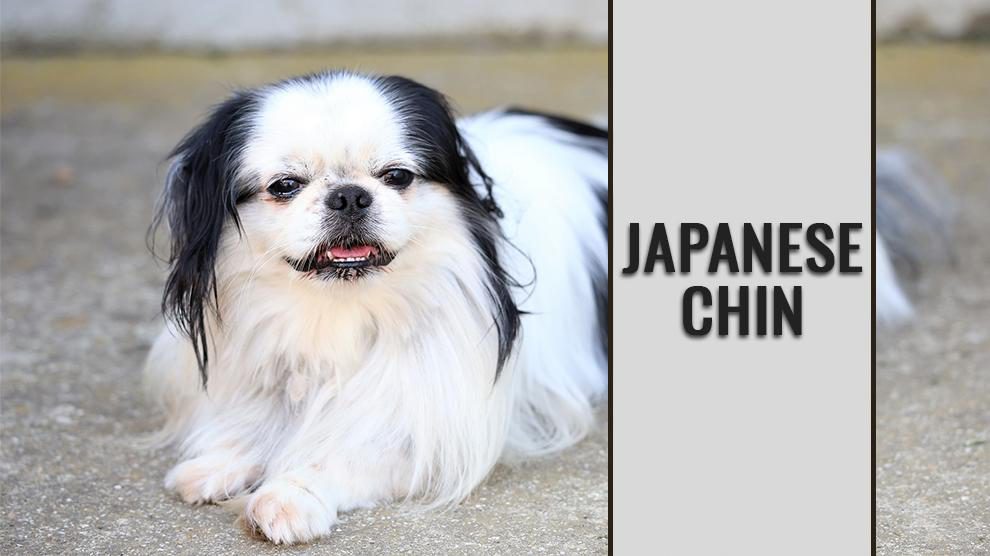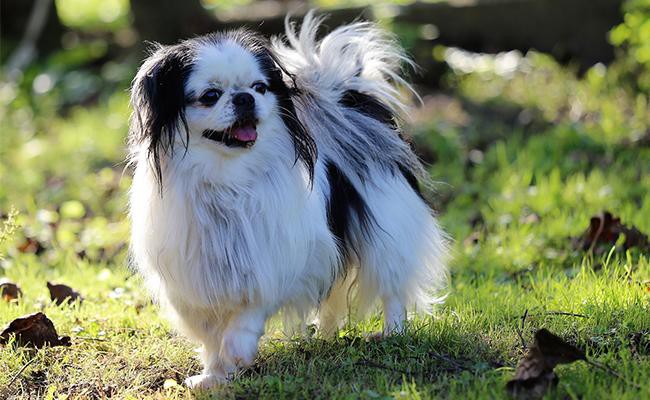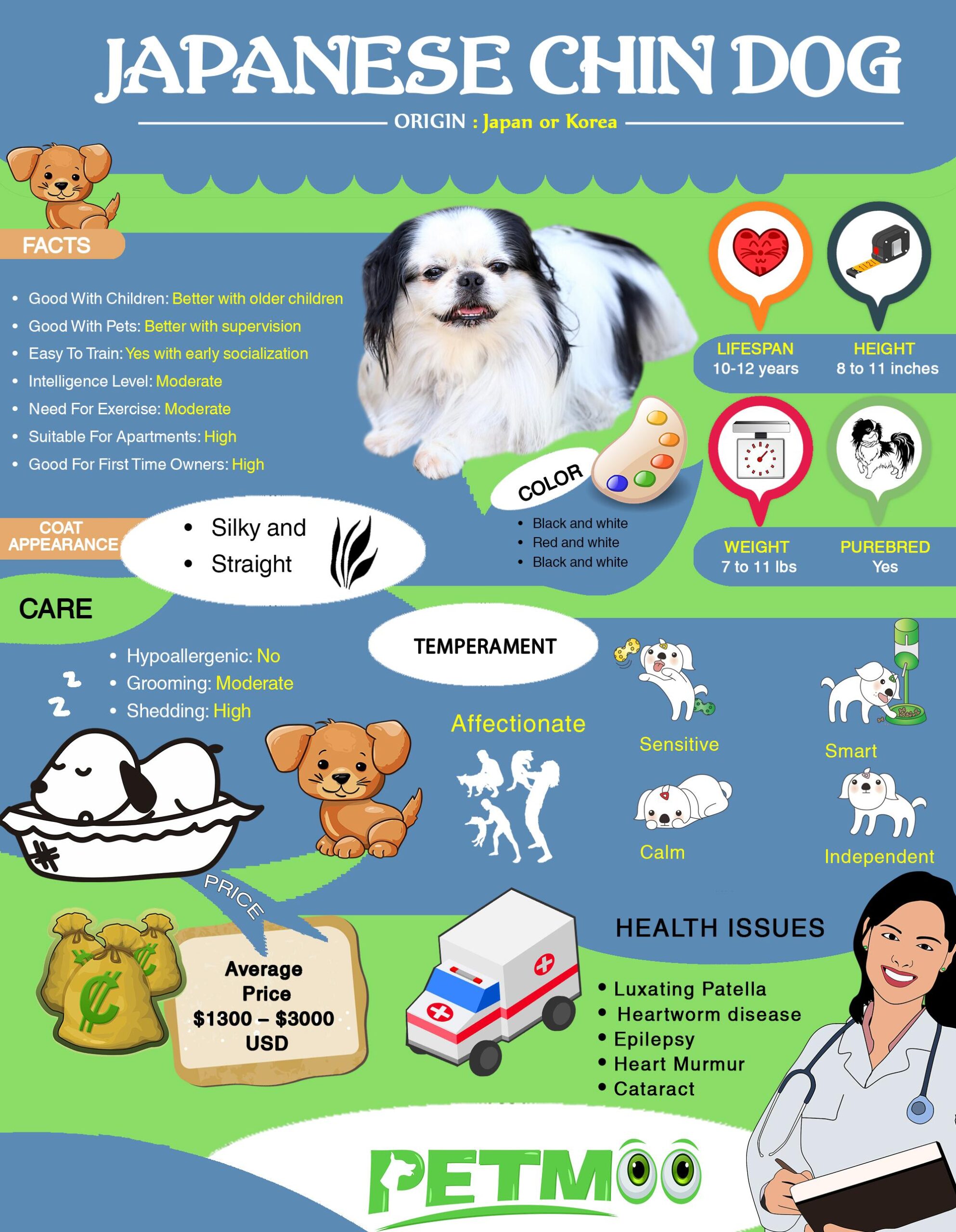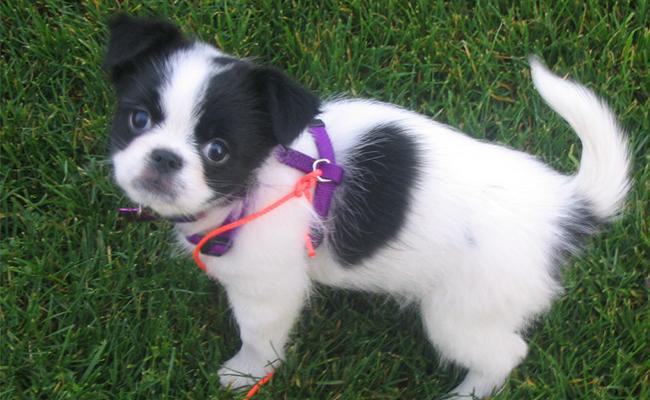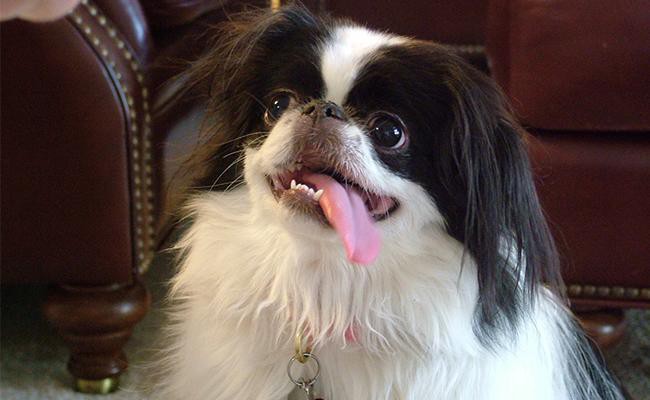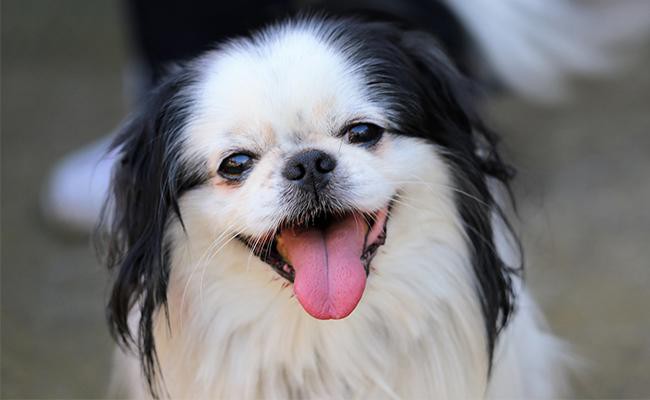Dog Pregnancy Calculator And Timeline
The Japanese Chin appears more like a delightful lapdog with an astounding loyal look.
Small, energetic, and adorable, this Oriental beauty has a unique expression and a bouncy gait. The Japanese Chin oozes aristocracy in every little way possible.
Often labeled as a unique “feline” breed, the Japanese Chin is mostly quiet, graceful, and finicky.
These dogs are always keen to please, sensitive, and loyal to its owner.
Japanese Chin Breed Characteristics Sheet
- Origin: Japan or Korea
- Size: Small
- Dog Breed Group: Toy group
- Purebred: Yes
- Lifespan: 10-12 years
- Height: 8 to 11 inches
- Weight: 7 to 11 lbs
- Coat Appearance: Silky and straight
- Coat Colors: Black and white, red and white, black and white
- Temperament: Smart, sensitive, independent, quiet, calm, humor, affectionate, show dogs
- Good With Children: Better with older children
- Intelligence Level: Moderate
- Good With Pets: Better with supervision
- Hypoallergenic: No
- Grooming: Moderate
- Shedding: High
- Suitable For Apartments: High
- Need For Exercise: Moderate
- Easy To Train: Yes with early socialization
- Good For First Time Owners: High
- Health Issues: Luxating Patellas, Heartworm disease, Epilepsy, Heart Murmurs, Cataracts
- Litter Size: 1-5 puppies
- Average Price: $1300 – $3000 USD
Japanese Chin History
Well, that’s a remarkable start. Experts have long questioned the Japanese Chin’s beginnings. Some dog lovers claim it’s a dog-work of Korea; others say China.
Various origin stories credit Buddhist monasteries, Chinese aristocrats, or European merchants who introduced this breed to Japan.
All Chin lovers conclude that it was aristocrats from Japan who bred and enhanced this breed as we all know it today.
Japanese Chins were unknown beyond the Asian continent until 1854 when the Japanese Emperor decided to reopen for trade after centuries of secrecy and isolation.
In the 1850s, Admiral Commodore Perry presented Queen Victoria some Chins after he returned from a Japanese trip.
Japanese earthquakes and World War I reduced the number of Chin dogs in Japan.
No proper documents exist to prove when the Japanese Chin first entered the United States of America. At that time, these dogs were called Japanese Spaniels.
In 1977, the AKC recognized this breed.
Japanese Chin Appearance And Coat
Chins are the best lapdogs of Japanese breeds. They have an Eastern bearing and look.
The Japanese Chin always carry a sense of “amusement,” and this is conveyed with their dark, round eyes.
The profuse mane that appears around the shoulders and neck, the plumed tail bending over the back. They project the exotic, stylish appearance so versatile of Japan’s royal ancestry of cuddle heritage.
General Appearance
The Japanese Chins are aristocratic, exciting, well balanced, and a small dog. They are both royal and rich in action.
The plumed tail arches over the back. The dog’s silhouette carries a different appearance.
- Head – These dogs have a smart, alert, inquisitive, and bright expression. The amazing Oriental expression features facial markings, ear feathering, short broad muzzle, large eyes, and a broadhead.
- Eyes – A little bit of white appearing in the deep inner corners
- Ears – Wide apart, small, and hanging
- Muzzle – Short and broad, well-managed cheeks
- Nose – Open nostrils, very short and wide
- Bite – The jaw appears undershot and wide
- Neck – Thick and moderate
- Body – Rounded ribs, square, and moderately wide
- Tail – Arched up
- Forequarters – Fine boned and straight(legs)
- Hindquarters – Point straight ahead
Japanese Chin Coat And Coat Color
Silky and straight. These dogs stand out from the crowd. Ruff or mane is seen on the chest, shoulders, and neck area.
Black and white, red and white, black and white with different tan points. Red means various shades of sable, lemon, orange, and red.
The symmetry of facial appearance is preferable. The number, shape, and size of body patches do not matter to a great extent.
Japanese Chin Size And Lifespan
- Height – 8 to 11 inches
- Weight – 7 to 11 lbs
Japanese Chin Lifespan
The average lifespan of a Japanese Chin dog is between 10 and 12 years. The Japanese Chin, called “ Japanese Spaniel” is a breed recognized for its importance.
Being both an excellent companion dog and a lap dog, these toy breeds have a rich heritage.
Japanese Chin Temperament
- A smart and sensitive canine whose primary creation is to please their human companion. Affectionate and responsive with people it knows but aloof with strangers or unknown persons.
- Japanese Chins have a great sense of humor. They can make their owners laugh without any break, such is their attitude.
- They prefer to be independent and pursue their own interests.
- These dogs have brilliant memory. Chins are splendid entertainers.
- Some experts describe their unique voices as “killer bees.”
- Chins, in general, are quiet and calm dogs. They are popular for their distinct “singing.”
Japanese Chin Interesting Facts
- The origin of these dogs are clouded in deep mystery
- In Japan, Chin are descendants of Chinese aristocracy and royalty
- The former name of this breed was Japanese Spaniel. It was changed to Japanese Chin in 1977
- Matthew Perry Chins to America
- Queen Alexandra made this breed famous
- These dogs spin around mainly in circles for fun
Japanese Chin Care
The Chins will find it hard to live in humid weather. These dogs are not suitable for outdoor living.
A short walk will meet their exercise needs and they are very energetic breeds.
Playful, proud, and perky, the Chins are less hyperactive. These dogs are less yappy than different toy breeds.
A dog of luxury, these dogs enjoy snuggling into cozy pillows and cuddling on laps. His dark, lovely eyes invite pampering.
These dogs are good climbers, very graceful, and light on their feet.
This gentle breed insists on quick interaction and attention. They are a great pet for older adults. But, Chins are always stunned by small kids and they do not take rough handling well.
Most Chins are aloof but polite with strangers. They are good with other pets.
Though these dogs have a royal demeanor, they are sensitive and bright. Their perfect day involves spending more time with people, mixed with bouts of fun and play.
Chin loves to spring from the hind legs or prance. They toss around shoes and socks.
Japanese Chin Grooming And Shedding
The long, shiny, and silky coat give this dog very high maintenance. In general, these dog breeds are not difficult to maintain in pristine conditions.
He requires regular weekly brushing once a month. A monthly bath is also recommended depending on his condition or surroundings.
The Japanese Chin nails grow quickly and should be neatly trimmed regularly. They should be kept neat and short.
Check their ears regularly to avoid the unnecessary accumulation of debris and wax. This can cause persistent ear problems.
Brush the dog’s teeth to prevent tartar and plaque buildup.
Simple tips
These dogs might look like they need plenty of work. No, that’s not the case. His abundant coat is simple to handle and rarely mats.
Use a pin brush and this will prevent the hair from flying here and there. After a bath, you should completely towel him off so that he completely dry.
Now, you can brush the coat using a pin brush.
Always use a vet-recommended toothpaste for neat fresh breath and health.
Japanese Chin Health Problems
The Japanese Chins are excellent and healthy dog breed. Every responsible and reputable dog breeder will screen the stock for different health concerns including –
- Heart murmurs
- Epilepsy
- Cataracts
- Luxating Patellas
- GM2 gangliosidosis
1. Heart Murmurs
Heart murmurs are recognized when a vet checks a dog’s heart and hears a different whoosh sound. In canines, common causes include weakening of the heart, tumors, heart defects, heartworm disease, and heart valve problems.
If your canine suffers from breathing difficulty, and potbelly sounds congested, he could have some heart problem.
Treatments include surgery for correcting the underlying cause of heart murmur.
Symptoms
Some of the common symptoms of heart murmur include –
- Tumors
- Endocarditis
- Heartworm disease
- Dilated cardiomyopathy
- Heart defects
- Blockages
Treatment
Contact your vet at the earliest and he will suggest the best course of treatment.
2. Epilepsy
Seizures are one of the most common health problems in dogs. It is an involuntary disturbance and they are accompanied by muscle activity.
The term “Epilepsy” is used when the seizures happen on a regular basis.
Symptoms
Signs can include –
- Foaming
- Tongue biting or chewing
- Chomping
- Drooling
- Loss of consciousness
- Muscle twitching
- Stiffening
- Jerking
- Collapsing
Treatment
Stay calm. Move him away from sharp or any harmful objects. Do not touch your dog’s head or mouth, he may voluntarily bite you. Call your vet once the seizure ends.
3. Heartworm disease
Heartworms are costly to treat but easy to prevent. Dogs get heartworm because of an infected mosquito’s bite. We cannot check a mosquito for heartworm disease.
Symptoms
Some of the symptoms include
- Weight loss
- Decreased appetite
- Fatigue
- Reluctance to exercise
- Persistent cough
Treatment
Once your vet has confirmed that your dog is suffering from heartworm disease, she or he will suggest a treatment protocol.
After successfully treating the disease, your vet will check your dog to confirm that he is fine and healthy.
4. Luxating Patellas
Patellar luxation happens when the canine’s patella moves away from its anatomic position. A dislocated kneecap can cause some health issues in canines.
The condition of luxating patellas is more common in miniature and toy dog breeds such as Boston Terrier, Chihuahua, Pekingese, Pomeranian, and Yorkshire Terrier.
Female canines are more susceptible to this condition than their male counterparts.
Symptoms
The signs will depend on several factors such as degenerative arthritis, and so on. Other signs include sudden lameness, hindlimb lameness, and abnormal hindlimb movement.
Treatment
Surgery is the most preferred form of treatment for this disease. Contact your vet for more details.
Japanese Chin Food
The Japanese Chins are both active and delicate. They hail from ancient Japan and this is how their cute look was sculpted. They served as lapdogs for aristocrats.
As per reports, a not-so-active Chin will need around 210 calories on a daily basis. An active dog needs around 260 calories per day.
If your dog is active and smart, trains and exercises a lot, then you should consider feeding him at least 420 calories.
Watch your pet and ensure that he gets enough balanced diet to eat. Even lapdogs like these need the right amount of calories otherwise they may suffer from a lack of protein throughout the day.
Simple Diet Tips
A grain-free food formula is the best choice for this canine breed. You better select a kibble that has a lot of lean protein along with different veggies and fruits.
Foods containing omega 3 fats are ideal for your dog. Omega 3 fats are healthy for your dog’s coat and fur, joints, and heart.
Essential nutrients such as carnitine, taurine, and B vitamins will reduce the susceptibility to a heart-related problem.
A diet that contains Vitamin C and glucosamine will be better for this dog breed. Maintaining the right weight will keep your dog healthy.
These dog breeds are prone to eye problems. So, an ideal diet should include carrots, broccoli, blueberries, pumpkin, and fatty fish.
The Right Way to Feed A Japanese Chin
Experts agree that Chin puppies take more time to wean than most other dog breeds. It can take more than 42 days for the puppy to understand that solid food is now permissible.
At 16 weeks of age, on average, a Japanese Chin will need about 150-170 calories of a balanced diet to stay active and energetic.
Foods that contain Vitamin B and Omega 3s are ideal for your dog’s health.
Provide clean, fresh drinking water 24/7 without fail.
Safe “Human foods” for Dogs
- Bread
- Cashews
- Cheese
- Corn
- Coconut
- Fish
- Eggs
- Honey
- Ham
- Milk
- Pork
- Popcorn (unsalted or unseasoned)
- Shrimp
- Salmon
- Quinoa
Not so Safe “Human Foods” for Dogs
- Almonds
- Cinnamon
- Chocolate
- Garlic
- Macadamia nuts
- Ice cream
- Onion
- Artificial sweeteners or xylitol-based products
- Alcohol
- Caffeine-based products
Japanese Chin Training And Exercise
Training Chins are good for the trainer. Bred strictly as lapdog companions for aristocrats. The dog’s only job right throughout the breed’s development is to entertain, amuse, and charm their humans.
They are considered as “catlike” in behavior. These dogs love positive reinforcement training, but will not allow even a bit of harshness.
Make sure the training sessions are fun and interesting. They love to try out new activities for their adoring fans and followers.
Japanese Chin Exercise
The Chins are robust, energetic dogs. He loves going for slow short walks or discovering his fenced backyard.
These dog breeds are ideal for apartment living.
Due to their adamant nature, it is not the right attitude to allow them to explore outdoors without any leash.
If they decide to explore a new area, no amount of pleas will stop them from doing this activity.
They are highly reserved around new situations, pets, and people. With early socialization, these dogs will love going for training in the adult-supervised dog park.
Japanese Chin Puppies Names
Not that popular in America, the Chins are dogs that you either 100 percent hate or adore.
These dogs are catlike in their attitude. Coming from an aristocratic background, these little royal dogs have names that reflect their Asian identity.
Since these dog breeds are lapdogs, many dog lovers choose a toy dog name. The Chins were only owned by the Royals for a long period of time and commoners owning one would invoke a range of punishment.
So, choose a cute name that’s simple on the ears.
Male Japanese Chin Puppy Names
- Masaaki – Pleasing One
- Fumio – Hero
- Hina – Sun
- Hikaru – Light
- Hiroki – Great
- Hoshiko – Star
- Yuuto – Gentleness
- Yuri – Lily
- Yumi – Archery Bow
- Yasu – Quiet
- Wakana – Harmony
- Umeko – Plum, apricot
- Tsubasa – Wing
- Tsubame – Swallow bird
- Tomomi – Wisdom, intellect
- Tomoko – Friend
- Takuya – Expand, open
- Takara – Treasure, jewel
- Shou – Prize
- Shun – Talented, fast
- Sora – Sky
Female Japanese Chin Names
- Satomi – Wise and beautiful
- Maiko – Child of dance
- Naomi – Honestly beautiful
- Yoshi – Lucky
- Megumi – Blessing
- Keiko – Blessed child
- Kamiko – Superior child
- Tamiko – Beautiful child
- Hoshiko – Star child
- Saki – Blossom of hope
- Michiko – Beautiful, wise child
- Kimi – Noble, respected
- Daiki – Great glory
- Miki – Beautiful princess
- Kiyoko – Pure child
- Haruko – Spring person
- Masumi – Beautiful
- Toshiko – Clever
- Mei – Sprouting
- Miku – Sky
Top Rated Dog Trainers / Walkers / Breeders In Your Area
Japanese Chin Price And Breeders
Japanese Chin Rescue
The cost to bring home a Chin depends on different factors including breed ancestry, socialization efforts, training, breed popularity, litter size, reputation, and breeder’s location.
The current average price for this breed is between $ 1300 and $ 3000 USD. This is the price of a Japanese Chin bought from a reputable breeder.
But, you could buy a Chin for a much less price without papers but the dog may be susceptible to health issues.
We do not recommend you to buy a puppy without proper documents.
You should allocate somewhere around $ 2000 USD onwards for a show-quality dog with proper papers.
Click here for the top-rated dog breeders in America.

